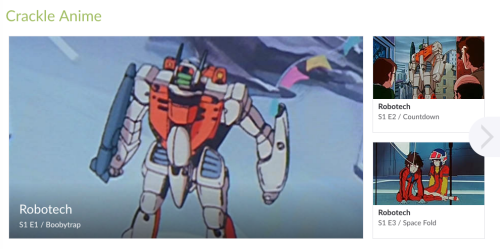#amazon prime
Selah and the Spades | Official Trailer ♠️

Writers of the past warned us about letting Big Brother and alike in our lives, either with or without consent for a generous and obvious amount of reasons. Today we have compromised quite a bit with the triangulation of privacy between us, government, corporations, and where the value should be placed at; however, there’s also a great deal in politics that comes with it.
This week Amazon publicly bloomed another interesting idea in terms of delivery and privacy polarization which involved the users receiving his/her goods, with theAmazon Keyservice where the delivery person has access to your home via a kit costing $249.99. This service requires Amazon Prime and the bundle includes a smart lock and a cloud cam to monitor the delivery personnel to your home, which basically translates into Amazondropping your package entering your doors.

Paying to have strangers in your home?
I’ve heard different complains up until now about couriers dropping packages to the front door and eventually getting stolen by someone else. We are talking about packages which cannot fit in the common mail box and are delivered the homeowner aren’t in. Here we have a common problem where there’s data missing in the form of service between the user and the business. But delivering a package without anyone stealing it is more an issue of drop-off timing and setups.
Ever since the internet became widely and commercially available we stepped backwards in terms of privacy rights and user rights. There’s an ongoing battle to protect not only the neutrality of the internet but also the privacy of the user. This is not a confrontation to safeguard what we go online for, it’s a struggle to keep sensible data away from those who might use it against us. Social Security numbers, credit cards information, shopping habits, health status, and so on; the struggle gets more and more intense every time

The extension of 3rd party body into our privacy is now a reality…
In terms of privacy users aren’t helping the cause as they are voluntarily giving up personal information at no cost to online social platforms. Facebook knows a great deal of every user and it crosses such data with other apps like Instagram to provide exact persona and behavior; great amount of data sold to corporations for business purposes comes from platforms like Twitter, Tinder, Snapchat, Youtube .
By using Amazon Key we remove the last boundary of security we hold by letting strangers in our homes despite being monitored; however, how secure will these locks be? If modern cars can get hacked, how long do you think it’ll take to remotely open a door? But ultimately, how much are you willing to give just to have your package inside your door. Is this all worth it?
One of the problems with the “politically relevant” fantasy genre is that it frequently offers “representation” and “relevant” critiques of social problems in ways which favor the representation of the oppressions people face, rather than of the people themselves–meaning metaphors which parallel fantasy races to people of color while using a predominantly white cast. Often times this further reifies the unmarked categories of the cultural context the work is produced in (ie whiteness as the dominant & default category), further marginalizes and dehumanizes people of color, andpositions white folks as the victims of metaphorical white supremacy. Amazon’s new streaming original Carnival Row is an unfortunately clear example of this continued fetishization of white poverty/desperation/vulnerability at the expense of communities of color.
Spoilers below.
While one might rightly critique the “trauma porn” genre and the way that people of color are often brutalized on screen or depicted only as victims of violence in discussions of oppression, with the solidarity and resistance of communities of color erased from dominant narratives, substituting white bodies into these sequences of violence does not offer us a useful subversion. In her book What You Are Getting Wrong About Appalachia, Elizabeth Catte talks about the historical and contemporary use of a particular image of white poverty. The focal example of Catte’s book is J.D. Vance’s memoir Hillbilly Elegy (2016) where Vance consistently uses the image of the bad, dependent poor white to reify racist images of poverty and undermine the need for programs and systems to support poor folks–just one example of this is the way he insists that the “welfare queen” is real and implicitly argues that the use of this stereotype to undermine welfare programs is not racist because he has known white welfare queens. Outside of contemporary use, Catte also gives examples such as how in the 1960s “white poverty offered [white people uncomfortable with images of civil rights struggles] an escape–a window into a more recognizable world of suffering” (59), and the quotes Appalachian historian John Alexander Williams comments on the way that, in the displays of Appalachian poverty, “‘the nation took obvious relish in the white skins and blue eyes of the region’s hungry children’” (qtd Catte 82). This obsession with white poverty has little to do with addressing the actual problem; instead, it is a tool used to obscure oppression, resistance, and transformative solutions to these problems.
Carnival Row offers a discourse on colonialism, racism, and xenophobia intended to mirror the political climate of the real world, namely the violence experienced by refugees and undocumented immigrants. It also attempts to comment on the way that Global North/colonial nations often create or are implicit in the creation of catastrophes which cause Global South/colonized nations and regions to become unsafe and result in refugee migrations, as well as the subsequent way that many times when refugees end up immigrating to the very nations that played a role in the collapse of their homelands, they are met with violence on multiple levels and their traumas are ongoing. In this current moment, this kind of discourse/intervention is “relevant” (I use scare-quotes because while the treatment of refugees in many Global North nations is horrendous in this current moment, this is not a new problem the way it sometimes is imagined) and I’m even willing to concede that there are some things which I think are done well. However–and this is a big however–the choice to make a predominantly white non-human population the metaphorical stand in for real life people who are predominantly of color greatly undermines what the series is attempting to accomplish. The implicit message is that it is easier for general audiences to sympathize with and recognize the personhood in non-human white figures than it is to sympathize with and recognize the personhood in real life people of color who are actively experiencing the violence fictionalized in this series. Furthermore, even as the victims obscure the real role white supremacy plays in xenophobia and the violence experienced by migrants and refugees, it still is a form of trauma porn. The only real difference is that because of the dominant whiteness of the victims, this version of trauma porn allows for the voyeuristic participation in systems of violence wherein many who are passively complicit (or even actively responsible) in the very systems causing violence are able to relate to the victims and experience a sort of cathartic release which allows them to maintain their complicity, feeling “good” that they consumed “politically relevant” content which allowed them to “care” safely, without having to address the reality that they are part of the brutalizers not the brutalized.
One of the ways that the show attempts to somewhat skirt around this problematic of white victimhood is by giving many of the white refugees, namely the main character Vignette (played by British actor/model Cara Delevigne), Irish accents and setting it in a time period which ambiguously mirrors the time before (as Noel Ignatiev puts it) “the Irish became white”. Celtic whiteness is used both in Carnival Row and with the case of Appalachia, and seems to be a particular favorite flavor for the fetization of white poverty. My personal theory is that this is because, when used in this way, the British colonization of Celtic peoples works to simultaneously obscure the racialized realities of both poverty and colonialism–in this fashion, Celtic whiteness is Othered just enough to justify the creation of white victimhood as a fetish object, but still undeniably white enough to connect this victimhood to the universal construction of whiteness. While there is nothing inherently wrong with including Ireland (or Scotland or Wales) in discourses of colonialism/neocolonialism because Ireland and other Celtic lands were and are colonized by the British and this colonization has had a clear and lasting impact on these regions and these peoples, using it as part of the fetishization of white poverty does not further anti-colonial goals, and again is being used to displace and obscure the way racism and white supremacy are central to anti-refugee and anti-immigrant rhetoric, policies, and popular practices.
During the first few episodes, I tentatively imagined myself commenting on the only semi-positive aspect I saw in the show’s use of whiteness: while obscuring metaphors for white-supremacist politics are deployed in many fantasy works, they often position people (humans) of color as being members of the human-supremacist groups which are meant to reflect real life white supremacy, further obscuring the real stakes of the topic being discussed. For the first four episodes, Carnival Row avoids this problematic and gives a representation of the metaphorical anti-immigrant/“pro-Brexit” crowd exclusively through white humans–and bonus points, they can be found in both the political elite and the working class/poor. While the whiteness of fantasy races means that the real life targets of white supremacist violence (people of color) are obscured, at least this allows us to remain clear on who is responsible. That, unfortunately, changes in episode five. One of the major places where we can see this change is in the introduction of Sophie, a woman of color, who takes over her (white) father’s seat in parliament after his death. Sophie gives a speech where she mobilizes her status as a woman of color to further fantasy-racism, stating that her mother had “desert blood” and experienced racism, but that the city overcoming racism and recognizing the value of racial diversity does not apply to the “Critch” because “our differences are more than skin-deep” (ep 5, 34:15). While this is predominantly intended to differentiate real racism (which I guess has been solved?) from Fantasy Racism™, it also serves to undermine the dehumanizing politics of racism which are continuously deployed. It reassures audiences that real life racism can be solved because race is just skin deep and we’re ultimately all pretty similar. This obscures the historical and contemporary claims about “race science” and “racial difference” which often explicitly and implicitly justify racism. While in this present moment “race science” has become a more latent belief–most people laugh at the idea of measuring skulls–everyone with a White™ Facebook friend who’s taken a 23-and-Me to prove they’re 0.005% African can speak to continuing beliefs in biological race theory.
Ultimately, like many other “politically relevant” fantasy works, Carnival Row’s use of a white washed Fantasy Racism™ as a metaphor for the systems of oppression that, in the real world, affect people of color remains highly problematic. In both our personal viewing practices and in our practices of creating and curating stories, we must think critically. Storytelling is a powerful tool in shaping how we perceive and consider reality, so when we choose to tell stories that represent marginalized communities exclusively by their oppressions, and especially when we choose metaphors that participate in the fetishization of white desperation and whitewash these communities we are doing real harm.
The Wilds lockscreens
I tried my best to remove the logos while not messing up the images too bad so there might be slighty distorted parts in some of them
like/reblog if you save/use
Post link
Hey there, gang! 2016 is half over, and I thought it might well be time to check in with a State of the Robotech Universe – at least from where I’m sitting down here in little ol’ Southeast Kansas. Above you’ll see five images that I think cover all the major points worth looking at.
- You’ve surely heard by now that, as Tommy Yune & Bill Spangler both alluded to on the convention trail during Q1 & early Q2, a new comic publisher has picked up the Robotech comic book license. The unlikely new home of Robotech comics in the English speaking world is Titan Comics out of the UK. Titan’s been around for thirty-five years, but they’ve been in the periodical comics game for only two or three, having immediately seized the worldwide publishing rights for Doctor Who comic books after IDW’s license expired. In the past year they’ve been diversifying their licensed comics portfolio, picking up licenses to publish comics for NBC’s TV series The Blacklist, Showtime’s recently concluded TV series Penny Dreadful, video games like Assassin’s CreedandDark Souls, and Dreamworks’s movie & TV franchise Penguins of Madagascar. They’re also the English language publisher of the manga based on the BBC TV series Sherlock. It’s been a while since Robotech has been snapped up by a company on the upward swing, and I’m curious to see what will come of this. No creative team or setting for Titan’s first Robotech series has been announced, but the first issue is pencilled in for Q1 2017. Further details may well start spilling out as early as this weekend, since Anime Expo startstoday.
- Likewise, you’re probably aware that Sony’s free streaming platform Crackle is now playing host to the entire Robotechtelevision series plus The Shadow Chronicles. They only sent press releases about this to the four corners of the Earth, as well as used that overfamiliar promo piece of Rick in his Veritech as the icon for Crackle to entice folks to install the app on their PlayStations for a while. Of course, the version Crackle is showing is the 2004 Remastered edition. Mercifully, based on what I’ve seen, the ad breaks are at the proper midway act break and before the next episode previews, so they’re only as obtrusive as they would be if you were watching the show on TV in the 1980s or 1990s. (I hate it when streaming platforms start randomly throwing ad breaks in willy nilly.)
- Ah, but what if you want to kick things a little more old school? Well, far less publicized is the fact that Amazon Prime streaming started offering up the original broadcast versions of the Robotech television series on June 13. No remastered footage, no modern sound effects – the TV series as it aired in syndication in the 1980s and on cable in the 1990s. They’ve also got The Shadow Chronicles as well as of the 29th. The official Robotech twitter account is really pushing the Crackle thing but, as far as I’ve seen they’ve said nothing about the original version of the show on Amazon Prime. I expect that’s largely because Crackle is owned by the same folks who are allegedly giving us that Major Motion Picture that’s been in the works off an on for almost a decade now …
- As for merchandising, Toynami’s been awfully quiet since the repaint wave of the Toynami/Calibre blind box figures came out. On the other hand, Bandai in Japan have been busy putting out new original Super Dimension Fortress Macross mecha figures (in approx 1/100 scale) every other month or so. The latest release is the Glaug (a.k.a. the Officer’s Battlepod), and the coming months will see the massive Monster Destroid, the “cannon fodder” brown VF-1A Valkyrie andHikaru Ichijyo’s red & white VF-1J (a.k.a.Rick Hunter’s Vermilion One) with TV-series-accurate puffy round hands and a matching pilot beneath the canopy. I’ve got the Glaug myself, but haven’t had a chance to crack it out of the box yet; I’ve got the VF-1A on preorder, but that wasn’t easy. It’s definitely worth noting that preorders for all of these figures on the big import sites (HobbyLink Japan, AmiAmi, Hobby Search) fill up within hours. It’s nice to see such demand for the mecha of the old ‘82 & ‘84 material, but at the same time, it kind of makes me wish Harmony Gold and Big West would kiss and make up so that Bandai’s U.S. distributor Bluefin could carry these things. (Speaking of toys, Harmony Gold and RTUCN have been making a big deal about KitzConcept in Hong Kong doing officially licensed transforming SD versions of Rick & Roy’s Veritechs but A) I’m not a big fan of that VF-1S head sculpt, and B) these are just officially sanctioned rereleases of unlicensed “third party” toys that have been available for about a year now.)
- I would be remiss if I didn’t point out that back in Japan we’re at the half-way point in the latest Macross sequel television series, Macross Delta. Thirteen episodes in and it’s everything I wanted from a new Macrossseries: a clever shuffling of archetypes (this time the lead character has no aircraft piloting aptitude and no dream he’s striving for at the outset – now that’ssomething new for Macross!), a new twist on the “music as a weapon” concept that’s been threaded through most Macross stories, awesome dogfights with Valkyrie designs that, to me, are a return to form after the boxy, ugly VF-25, and only very occasional overt callbacks to earlier shows (though there’s an awful lot of Macross II andMacross 7 in this thing’s DNA; the former might be a coincidence, but I’m betting the latter is not so much). Alas, as with every Macross series since Macross Plus wrapped,Delta is trapped in Japan until, again, either Harmony Gold and Big West agree to shake hands, or until Harmony Gold loses the rights to Macross (March 2021 at the earliest, assuming they don’t reach a new agreement with Tatsunoko; their claim to the Macrosstrademark would then need to expire or be challenged in court). However, big spenders should note that apparently the Japanese blu ray discs for Macross Delta (compatible with U.S. players!) that start hitting stores this month will feature English subtitles.
- With that all said, here’s looking forward to some actual news from AX and/or SDCC. I’m not going to set my hopes too high; really, I’d just like to know what’s happening with the new comic series. I’d also like someone to ask whatever happened to those new art books from Udonthat were announced back in the summer of ‘14. I was looking forward to those …
Post link
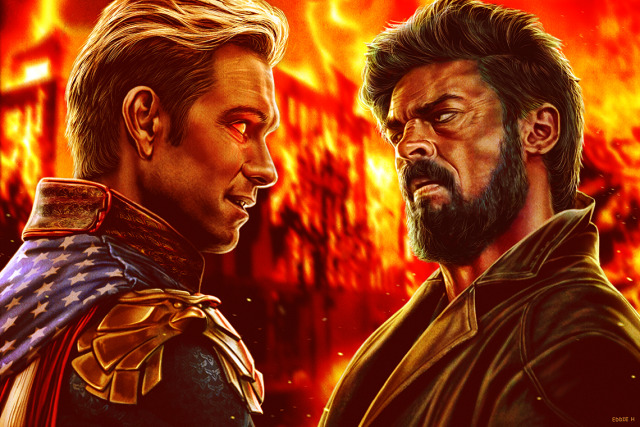
I do whatever the **** i want
The Boys TV


The Temptations of Good and Evil
Based on George Hillyard Swinstead’s The Angel’s Message

Back in July I spent a solid four days drawing nothing but Good Omens and I am ashamed it was not longer than that


°For the angel and the demon so lived the world°
Anne Hathaway Modern Love Final Scene | Prime Video
YouTube algorithm recommend this clip to me last Thursday. The whole episodes is honest and relatable for me… Anne Hathaway’s performance as Lexi was amazing and it moved me. I directly subscribe to Prime Video to know the full stories.
It’s the overarching message about mental health that’s the most important takeaway. At first Lexi appears to have a rewarding and glamorous life: She’s got a fantastic wardrobe, a spacious apartment, and a great career. She can flirt over produce and get a promising date in minutes. But then her depression plows through like a tornado. “I’ve seen people like Lexi, I have people in my life like Lexi, and I love people like Lexi,” Hathaway tells Glamour Magazine.
In the final scene, It’s a powerful moment for the character—and for Anne Hathaway. “It’s my hope that people watch that scene and realize we all feel that way at times,” the actor says. “We all walk around sometimes feeling like we have an elephant on our chest, but we’re not alone. And we’re not less than because of that. We’re not unlovable because of that.”


Tom BurkeasMichaelinModern Love, Season 2: On a Serpentine Road, With the Top Down




Tom BurkeasMichaelinModern Love, Season 2: On a Serpentine Road, With the Top Down




Tom BurkeasMichaelinModern Love, Season 2: On a Serpentine Road, With the Top Down










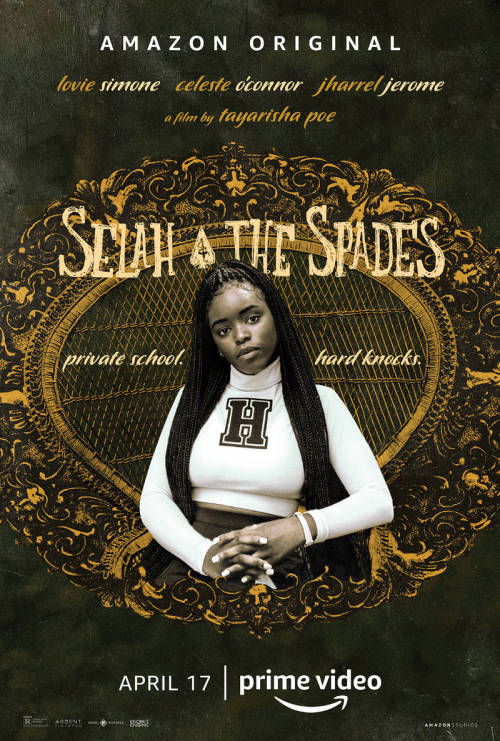








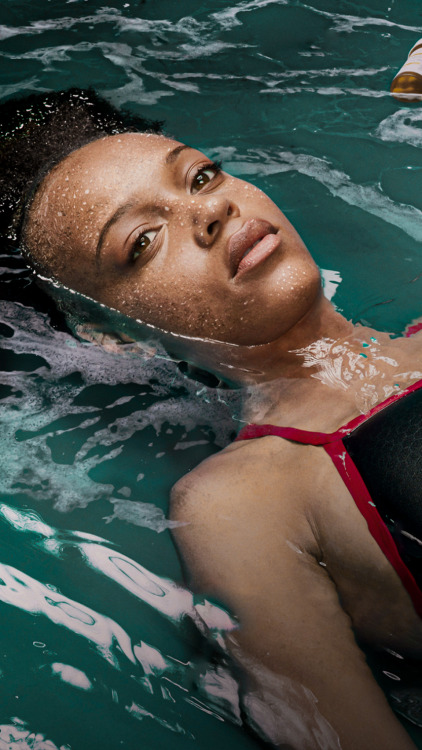


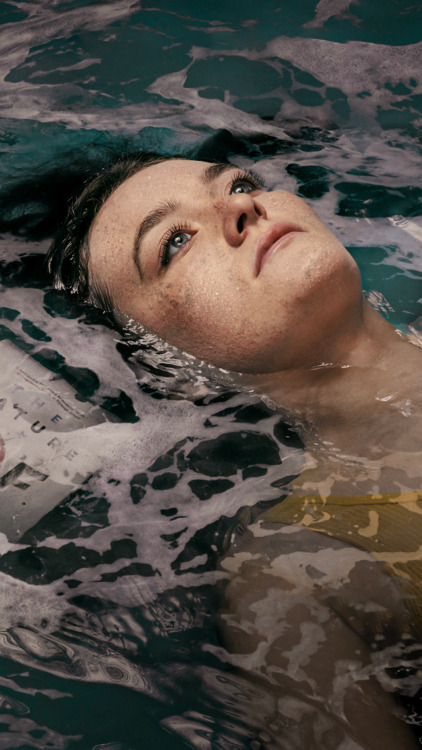












![Mia Healey [the wilds] lockscreenslike/reblog if you save/use Mia Healey [the wilds] lockscreenslike/reblog if you save/use](https://64.media.tumblr.com/3cf05161428ab24ebb2b786d5370ffdd/c1c0c57557f10729-e6/s500x750/d61cfb70841d0d5745684cf6d1b6e3f9dfaeb0ec.jpg)
![Mia Healey [the wilds] lockscreenslike/reblog if you save/use Mia Healey [the wilds] lockscreenslike/reblog if you save/use](https://64.media.tumblr.com/e92d427d75e784cc954c47e15cd4d8b9/c1c0c57557f10729-88/s500x750/bcfe1fcd9bfc44a1078da45bf5637e7495d531fb.jpg)
![Mia Healey [the wilds] lockscreenslike/reblog if you save/use Mia Healey [the wilds] lockscreenslike/reblog if you save/use](https://64.media.tumblr.com/a453b8a7d32c5f0baf8a5c5d8ec9578c/c1c0c57557f10729-f3/s500x750/5c140db80dc6619eaae30a90446da01fae4d5409.jpg)
![Mia Healey [the wilds] lockscreenslike/reblog if you save/use Mia Healey [the wilds] lockscreenslike/reblog if you save/use](https://64.media.tumblr.com/c67b74f14b178207c9169ed60f733f2c/c1c0c57557f10729-4e/s500x750/ddc97cd1b1c46c2c87b58bc72635106b2afd35ae.jpg)

